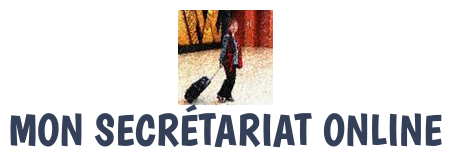Le(s) système(s) de communications sont, à priori, de plus en plus sympa à utiliser. Les barrières tombent entre les différentes applications. Tout est relié. Tout est connecté, en permanence. De plus en plus de synergies sont trouvées rendant ces systèmes quasi indispensables ou du moins le font ils croire.
Mais en réalité, plus les barrières tombent, plus la sécurité est mise à mal et plus le danger grandi. Alors que faire ?
Je vous propose deux angles d’attaque. La première, c’est la base, appliquer le plus possible les principes de bases de la méfiance. Avec la seconde, il s’agira de recréer des séparations entre les différents systèmes. Voyons cela un peu plus dans le détail…
1. Les principes de base de la méfiance, appliqués à la boîte Mail
Il faut se méfier…
- … des mails provenant d’inconnus, surtout si vous n’avez rien commandé ni demandé ou n’attendez rien…
- … des liens à cliquer, des images ou documents à télécharger venant d’inconnu. Mais méfiez-vous aussi de ceux provenant de façon inhabituelle de personne connue, car elles ont peut-être été contaminées par un virus et vous écrivent à leur insu…
- … de l’inhabituel, du surprenant
- … des messages soi-disant sécuritaires de banque, assurance, prestataire de services de messagerie etc. Si vous n’avez pas de compte chez eux, il s’agit, c’est sûr, d’une tentative d’hameçonnage. Si vous avez un compte et des doutes, regardez l’adresse mail… est-elle vraiment authentique ? Ou vous semble-t-elle bizarre ?
- … des spams, ces messages non-désirés, à caractère commercial ou promotionnel, qui vous promettent des miracles et finissent par « envahir » les boîtes électroniques.
- … des scams, ces messages faisant appel à votre compassion et vous demandant de l’aide ou de l’argent.
2. Recréer et Maintenir le maximum de séparations possibles
Pour protéger mon système, sans pour autant me priver des avancées de la technologie, j’ai choisi de garder les différentes applications les plus isolées les unes des autres que possible afin d’éviter le regroupement de données personnelles ou la propagation de virus. Ci-après quelques solutions que j’ai mises en place.
Gérer plusieurs adresses mail et donc plusieurs boîtes mail
Disposer de plusieurs adresses mails vous permet de décider celles que vous donnez à qui et pour quelles raisons. Ayez par exemple… :
- Une adresse mail principale isolée de tout, pour tout ce qui est privé, familial, bancaire etc…
- Une pour vos réservations en ligne, hôtel, avion etc.
- Une pour le téléphone mobile
- Une autre encore pour les newsletters
Utiliser en priorité les Webmails
C’est-à-dire préférez, vous connecter en ligne à vos différentes boîtes Mail, plutôt que de synchroniser avec votre ordinateur ou pire votre téléphone portable. Ainsi, en cas de contamination, votre matériel et vos données sont préservés.
Préférer la gestion d’agenda papier
Lorsque je travaillais en entreprise, l’usage du calendrier électronique pour réserver des salles ou convoquer les personnes à des réunions étaient une nécessité. Mais à titre privé…. Les dates d’anniversaire, les réunions de famille, les rendez-vous de dentiste… sont très bien sur un agenda papier. J’évite par ce phénomène tous regroupement de données personnelles avec des adresses mails ou de la correspondance.
Éviter la création de votre liste de contact mail
J’évite également la création de liste de contact mail au sein même de l’application de messagerie. Ainsi, en cas de contamination par un virus…aucune liste ne pourra être utilisée pour propager le virus.
Bien sûr, si pour vous c’est un impératif d’avoir une telle liste, pensez à y ajouter une simple lettre en plus devant (par exemple : z_nom.prénom@mail.com)… cela suffit pour rendre l’adresse inutilisable, sauf pour vous.
Traiter, imprimer en PDF et supprimer vos mails au fur et à mesure
Surtout lors de mails sensibles, traitez-les de suite et supprimez-les. Si nécessaire gardez-en une copie imprimée PDF que vous classez ailleurs. Faites-en de même avec tous vos mails… C’est tellement plus agréable pour travailler que d’avoir une boîte de réception vide ou presque.
Utiliser la déviation des messages d’une adresse mail à une autre, plutôt qu’une synchronisation entre plusieurs appareil
Éviter la synchro de vos mails et autres données entre plusieurs appareils. Je sais que c’est tentant et tellement pratique. Préférez lui, la déviation ou l’envoi de copie à une adresse mail choisie si vous devez pouvoir consulter vos mails tout au long de la journée.
Voilà quelques idées d’astuces qui vous aiderons, lors de la mise en place de votre système de sécurité personnel.
(Photos : CC0 @ pixabay.com)

